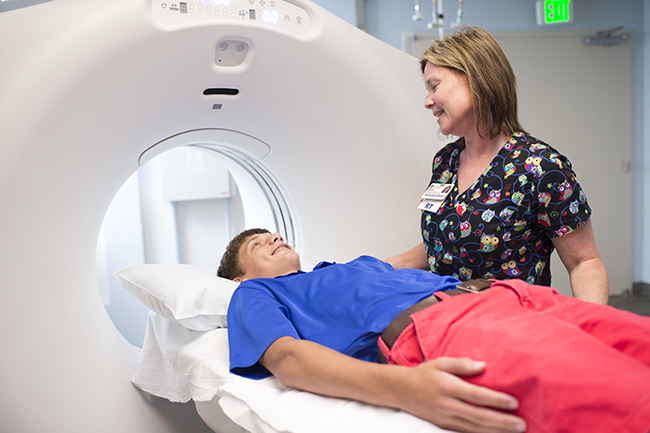Children aren’t just little adults — they have unique needs. Children’s hospitals know how to care for those needs.
Even as recently as decades ago, the protocol for treating medical conditions was the same for all patients, regardless of age. In the past few decades, however, research has provided insight into how different the medical needs of children are from those of adults.
In the first installment of our ongoing series, we talked about how children’s hospitals, including Children’s Hospital at Erlanger, are staffed by clinical professionals who specialize in the unique needs of pediatric care.
Today, we’ll focus on technology and equipment.
Benefit No.2: Specialized equipment
When it comes to stocking medical equipment for a children’s hospital, it’s logical that child-sized technology and equipment are necessary. But the unique equipment needs for children’s health care go beyond that for a key reason — kids grow. And a children’s hospital sees patients from when they’re born until they’re adults.
“With adults, you generally have one-size-fits-all medical equipment,” said Cynthia Rhodes, R.N., M.S.N., chief nursing officer at Children’s Hospital at Erlanger. “When caring for children, it’s nothing to have five or 10 different sizes of equipment. We’re taking care of children ranging from preemies up through teenagers. You have to have every size possible.”
The need for multiple sizes
When considering the importance of having appropriately sized equipment, consider the blood pressure cuff. A cuff that’s too small will give readings that are higher than the correct blood pressure. One that’s too big won’t yield accurate readings, either.
“Having the right size of equipment is imperative,” Rhodes said. “If you don’t have the right size of blood pressure cuff, you won’t get an accurate reading. That’s why we have more than a dozen different sizes of cuffs. For neonatal patients alone, there are about six different sizes.”
The need for child-sized equipment isn’t limited to blood pressure cuffs. To properly care for kids, you need specialized pediatric versions of everything from hospital gowns to beds to surgical equipment.
Determining what size is needed isn’t based only the child’s age, either.
“You never know what patient is going to walk through the door next,” Rhodes said. “And you can’t just rely on a patient’s age when determining size. When we’re caring for patients with chronic illnesses, you may have an adolescent patient who is the size of a smaller child. We cover cover it all, size-wise.”
When it comes to meeting the unique needs of children, we have the bases covered. Read more about why to choose Children’s Hospital at Erlanger.







